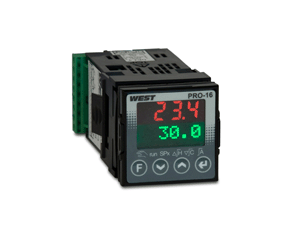Autoclaves, also known as steam sterilizers, are the most widely used and dependable methods for disinfection and sterilization. They are commonly found in medical facilities, dental clinics, veterinary clinics, and pharmaceutical and food industries to sterilize equipment and materials.
The autoclave uses pressurized steam at a controlled temperature to eliminate harmful microorganisms. By heating the pressurized autoclave chamber to the required temperature at a specified rate over a programmed period of time, the moisture in the steam transfers heat and destroys the protein structure of bacteria and spores rendering any objects inside sterile.
Application Challenge:Finding a manufacturing partner offering a complete portfolio of autoclave product solutions with unbeatable performance where optimal results are crucial. |
Precise, consistent control and monitoring of temperature, pressure, and quality steam delivery are required for effective sterilization. The three main variables of pressure, temperature, and time in the most common autoclave sterilization cycles are shown below.*
Pressure
Pressure plays an important role in the autoclave sterilization process. The various autoclave types use pressure differently.
| Gravity Type | Monitor pressure during the exposure phase, typically 1-2 bar (15-30 psi). Evacuate the chamber with a vacuum, typically up to -1 bar (-15 psi) during the exhaust and dry phase. |
| Pre-Vacuum | Apply a vacuum, typically up to -1 bar (-15 psi), or pulse pressure in the chamber during the conditioning phase. Provide and maintain positive pressure during the exposure phase, typically 1-2 bar (15-30 psi). Evacuate the chamber with a vacuum, typically up to -1 bar (-15 psi) during the exhaust and dry phase. |
| Liquids | Apply a gradually controlled vacuum (varies) in the chamber during the conditioning phase. Provide and maintain positive pressure during the exposure phase (varies). Evacuate the chamber gradually with a vacuum (varies) during the exhaust and dry phase. |
Temperature
Heating the chamber to the required temperature is imperative to achieve the required sterility assurance level (SAL) to be considered “sterile”.
| Gravity Type | Ramp to the desired temperature, typically 121°C – 132°C (250°F – 270°F), and maintain during the exposure phase. Ramp down to ambient temperature during the exhaust and dry phase. |
| Pre-Vacuum | Ramp to the desired temperature, typically 121°C – 132°C (250°F – 270°F), or pulse heat to match pressure pulses during the conditioning phase. Maintain temperature during the exposure phase. Ramp down to ambient temperature during the exhaust and dry phase. |
| Liquids | Slow ramp to heated temperature which varies by fluid volume. Maintain chamber temperature during the exposure phase. Slow ramp to ambient temperature during the exhaust phase. Monitor and maintain fluid temperature throughout the entire process. |
Time
Time varies greatly depending on the cycle, the autoclave manufacturer’s recommendation, and the type of objects being sterilized.
| Gravity Type | Controlled ramp rate for pressure and temperature. Hold at the desired temperature and pressure during the exposure phase. Controlled chamber evacuation and cooling over time during the exhaust phase. |
| Pre-Vacuum | Pulsed pressure and heat count over a specified time, or controlled ramp rate for pressure and temperature to prepare the chamber during the conditioning phase. Hold at the desired temperature and pressure during the exposure phase. Controlled chamber evacuation and cooling over time during the exhaust phase. |
| Liquids | Gradually increase temperature and pressure at a specified ramp rate to keep fluids from boiling over. Hold at the desired temperature and pressure during the exposure phase. Gradually decrease temperature and pressure at a specified ramp rate to retain the fluid properties and keep them from boiling over. |
*examples shown are common estimates for non-porous objects with standard sterilization cycles (not immediate use/flash or high temp cycles)
Application Solution:Gems Sensors & Controls provides key components across several product lines to ensure long-lasting dependable results in stand-alone autoclaves and complete sterilization systems. Accurate, Reliable, Stable, and Repeatable. Gems offers a robust product portfolio with an excellent price-to-performance ratio. |
3500 Series Compact Low-Pressure OEM Pressure Transmitters
|
Pro-16 Universal Profile Controller
|
KS98-2 Modular Automation System
|
Other Gems Product Offerings for Autoclaves:
CAL 9500P Programmer = Basic ramp/soak temperature control
FS-380, FS-480 Flow Switches = Water feed for boilers
LS-1755 Single Point Level = Drip tray, Steam water supply reservoir
LS-700 Multi-point level = Larger steam water reservoir, Boiler control
PS61 Pressure Switch = Positive pressure achieved switch
Gems Sensors products have been field-tested around the world and across industries for over 60 years. Partner with us today for your autoclave sterilization application from healthcare to laboratories to industrial manufacturing.
 SEARCH OUR RESOURCE CENTER
SEARCH OUR RESOURCE CENTER




